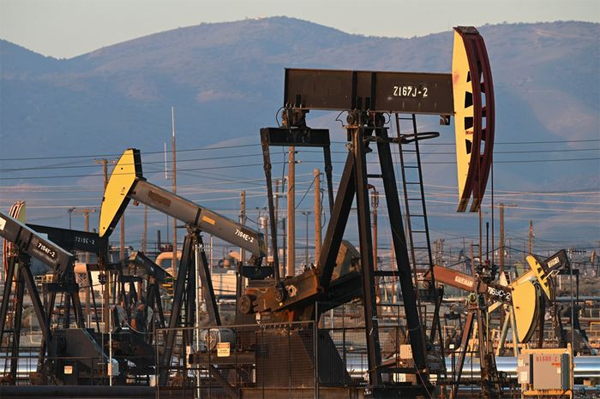
By William Watts/MarketWatch
NEW YORK
EnergiesNet.com 05 19 2022
Oil futures ended lower Wednesday, turning lower despite data showing an unexpected drop in U.S. crude inventories and a further, sharp fall in gasoline supplies.
The turn lower for crude came as an equity market rout dulled sentiment across asset markets perceived as risky.
Price action
- West Texas Intermediate crude for June delivery CL.1, -1.66% CL00, -1.66% CLM22, -1.66% fell $2.81, or 2.5%, to close at $109.59 a barrel.
- July Brent crude BRN00, -1.08% BRNN22, -1.08%, the global benchmark, fell $2.82, or 2.5%, to settle at $109.11 on ICE Futures Europe.
- Nymex June gasoline RBM22, -2.87% dropped 5.6% to end at $3.7206 a gallon.
- June heating oil HOM22, -2.54% shed 3.5% to $3.6681 a gallon.
- June natural-gas futures NGM22, -3.50% rose 0.8% to close at $8.368 per million British thermal units.
What’s driving markets?
The Energy Information Administration said U.S. crude inventories fell by 3.4 million barrels in the week ended May 13, while gasoline stocks fell 4.8 million barrels and distillate supplies rose by 1.2 million barrels. Analysts surveyed by S&P Global Commodity Insights had expected a 2.1 million barrel rise in oil inventories, while gasoline was expected to slip 100,000 barrels and distillates were forecast to drop by 1 million barrels.
The American Petroleum Institute, an industry trade group, reported late Tuesday that U.S. crude-oil inventories fell 2.4 million barrels last week, while gasoline stocks fell by 5.1 million barrels, according to a source. Distillate inventories were seen up 1 million barrels.
“Despite a 5-million-barrel release from the SPR, higher production and stronger imports, stronger refining activity and crude exports have encouraged a draw to (crude) inventories,” said Matt Smith, lead oil analyst for the Americas at Kpler, in an email.
The crude draw “was joined by a solid drop in gasoline inventories as implied demand climbed back above 9 [million barrels a day] for the first week in 14. Distillate implied demand also showed a minor tick higher but inventories still showed a minor build,” he said.
Analysts said the equity market selloff appeared to take the steam out of energy futures. “Data was bullish but with recession fears back in play it seems to not matter.”
U.S. stocks were sharply lower, with the Dow Jones Industrial Average DJIA, -3.57% dropping more than 1,100 points, while S&P 500 SPX, -4.04% slid 4%.
Earlier gains in crude prices were tied in part to hopes for easing COVID restrictions in China, the world’s biggest crude importer, said analysts. Optimism around “much higher oil demand and prices” is positive for producers, though harmful for consumer sentiment, wrote Stephen Innes, managing partner at SPI Asset Management, in a note to clients.
“And with unaffordable prices at the pump, which are a byproduct of demand exceeding supply, the Fed will be on a mission to raise rates to at least moderate the demand side of the economy, which could eventually filter through to a mild form of demand destruction where there could be a buyer strike rather than buyers splurge over U.S. peak driving season,” he said.
Data in the U.K. on Wednesday showed annual consumer prices climbing to a four-decade high, driven by higher energy prices.
Crude has been pushing the upper end of its trading range has prevailed over the past few weeks, noted Ole Hansen, head of commodity strategy at Saxo Bank, in a note to clients on Wednesday.
“During the past few weeks, the focus has turned from a rangebound crude oil market to the product market where the cost of gasoline, diesel and jet fuel have surged to levels not seen in years, if ever. The combination of refinery maintenance, a post pandemic reduction in capacity as well as self-sanctioning of Russian products have all led to incredible tight markets,” said Hansen.
marketwatch.com 05 18 2022












